Dream out loud’: Amsterdam’s Stedelijk Museum hosts designs for a better future
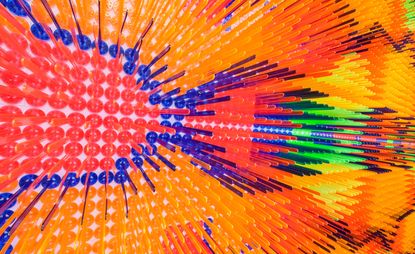
Wallpaper* doesn't have a reliable crystal ball. But if we did it would probably be designed by Swarovski, and it would no doubt unveil a catalogue of works from a new exhibition at Amsterdam's Stedelijk Museum.
'Dream Out Loud: Designing for Tomorrow's Demands' questions what the next generation will need and desire. The extensive group show – featuring no less than 27 emerging and established designers – is an eclectic romp through their REM worlds, allowing us privileged access to their wildest design dreams.
The emphasis is on conceptualisation rather than immediate functionality. Curator Lennart Booij explains, 'Idealism is not new to design, but now we’re seeing a change of emphasis: the focus has shifted from the design object to the idea itself.' This new wave of 'social design' is abundantly present throughout the gallery – in Pieter Stoutjesdijk's prototype self-building house, for instance. He dreamt up the concept in response to the devastating Haiti earthquake in 2010, particularly for residences in Port au Prince. The home is made from 122 'Eco boards' that can be produced locally and sustainably from grass, reeds or pruning chips, while a bowl-shaped roof collects rainwater.
Other featured projects are physically smaller, but pack an equally powerful punch; like Studio Formafantasma's recreation of their 2014 installation De Natura Fossilium, documenting two years' worth of research into bio-based polymer packaging, which reconstitutes lava into decorative glass.
The exhibition goes on to address a range of environmental and socio-politcal issues. Even the projects that seem like they're created for pure aesthetics comment on larger global issues. We Make Carpets' vivid tapestry of cocktail umbrellas, for instance, recognises the creative potential of things we use once, then needlessly throw away.
Despite the sobriety and immediacy of the global problems addressed by the exhibition, one leaves with a sense of hope. Each project is optimistic and each designer determined. It's exciting to see. Booij says of these encouraging works, 'It's all about bringing the seemingly impossible a step closer to reality. Social design responds to complex societal issues. And that’s of enormous relevance.'
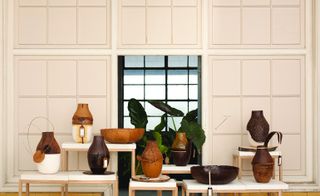
The exhibition features 27 designers, both established and emerging, addressing what the next generation will need and desire, while trying to come up with solutions to global problems through design. Pictured: De Natura Fossilium, by Studio Formafantasma, 2014
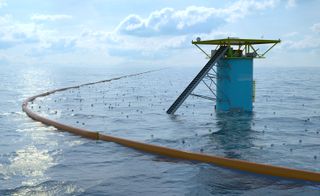
Being tested this year in the North Sea, Boyan Slat’s innovative, crowdfunded The Ocean Cleanup project (pictured) collects floating plastic and debris, to be collected and shipped onshore for recycling

Pieter Stoutjesdijk’s prototype self-building house has been constructed in the museum in life-size. The home is made from 122 ’Eco boards’ that can be produced locally and sustainably from grass, reeds or pruning chips, while the bowl-shaped roof collects rainwater. Pictured: Shelter for Haiti, by Pieter Stoutjesdijk, 2013
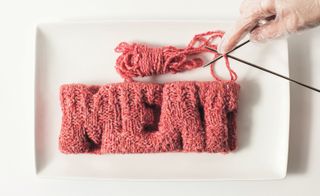
Designers Next Nature Network explore ways in which in vitro (or cultured) meat can be used in the kitchen, after the first cultured hamburger was produced at Maastricht University back in 2013. Pictured: In Vitro Meat Cookbook, by Next Nature Network, 2014
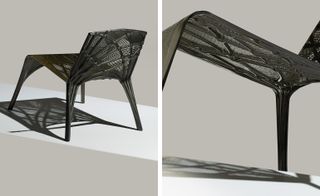
Design duo Kaptein Roodnat has teamed up with the Netherlands Aerospace Centre for their eco, carbon fibre chair. It has a delicate texture reminiscent of dragonfly wings, and was created with an advanced tool known as a carbon fibre placement machine, most often used in space travel. Pictured: Fibre Placement Chair, by Marleen Kaptein, 2014
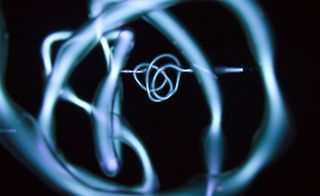
Pieke Bergman’s mesmerising lightwork uses inert natural gasses that emit light when subject to compression. The result is this tube of otherwordly blue light dancing across the screen. Pictured: Phenomenon, by Pieke Bergmans, 2016
INFORMATION
’Dream Out Loud: Designing for Tomorrow’s Demands’ is on view from 26 August until 1 January 2017. For more information, visit the Stedelijk Museum website
ADDRESS
Stedelijk Museum
Museumplein 10
1071 DJ, Amsterdam
Wallpaper* Newsletter
Receive our daily digest of inspiration, escapism and design stories from around the world direct to your inbox
Elly Parsons is the Digital Editor of Wallpaper*, where she oversees Wallpaper.com and its social platforms. She has been with the brand since 2015 in various roles, spending time as digital writer – specialising in art, technology and contemporary culture – and as deputy digital editor. She was shortlisted for a PPA Award in 2017, has written extensively for many publications, and has contributed to three books. She is a guest lecturer in digital journalism at Goldsmiths University, London, where she also holds a masters degree in creative writing. Now, her main areas of expertise include content strategy, audience engagement, and social media.
-
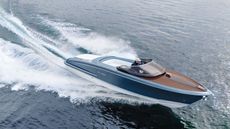 Riva El-Iseo is the legendary boat builder’s first fully-electric motor yacht
Riva El-Iseo is the legendary boat builder’s first fully-electric motor yachtThe Riva El-Iseo electric speedboat blends classic Italian lines with a silent, powerful and zero-emission powertrain
By Jonathan Bell Published
-
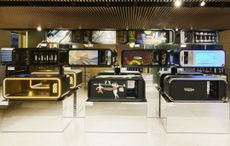 Technogym Home Bench 40 ways: designers interpret the home exercise classic
Technogym Home Bench 40 ways: designers interpret the home exercise classicTechnogym marks its 40 anniversary with 40 special editions of its Home Bench created in collaboration with international creatives
By Rosa Bertoli Published
-
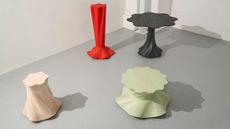 AHEC presents new works in American maple as part of the Wallpaper* Class of ’24
AHEC presents new works in American maple as part of the Wallpaper* Class of ’24The American Hardwood Export Council takes part in the Wallpaper* Class of ’24 exhibition at Triennale Milano during Salone del Mobile (16-21 April 2024), presenting new pieces by Parti and Giles Tettey Nartey in American hard maple
By Rosa Bertoli Published
-
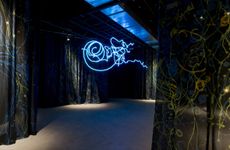 Best of Dutch Design Week 2021
Best of Dutch Design Week 2021After a virtual edition, Dutch Design Week is back for 2021 (until 24 October) with a physical showcase of creative talent across the city of Eindhoven celebrating the design event’s 20th anniversary
By Rosa Bertoli Last updated
-
 Saul Steinberg: behind the scenes at Triennale Design Museum
Saul Steinberg: behind the scenes at Triennale Design MuseumTriennale Design Museum and publishing house Electa present ‘Saul Steinberg Milano New York’, a new exhibition (until 13 March 2022) that pays homage to the American artist through 350 works. Join us for a behind-the-scenes peek at it's installation
By Rosa Bertoli Last updated
-
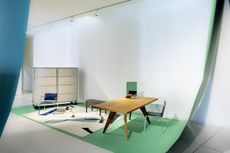 Ten years of Muller Van Severen, at Design Museum Ghent
Ten years of Muller Van Severen, at Design Museum GhentA new exhibition by Belgian design duo Muller Van Severen (until 6 March 2022) features a retrospective of the studio’s ten years as well as a curation of pieces from the Design Museum Ghent collections
By Rosa Bertoli Last updated
-
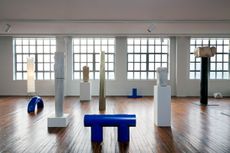 Noguchi show celebrates his reverence for Greece
Noguchi show celebrates his reverence for GreeceDesign show ‘Objects of Common Interest: Hard, Soft, and All Lit Up with Nowhere to Go’ opens in collaboration with Wallpaper* Designers of the Year, Objects of Common Interest, at the Noguchi Museum in Queens, New York (until 13 February 2022)
By Tilly Macalister-Smith Last updated
-
 ‘Design not for children, but for everyone’: Jewish Museum Berlin’s new play space
‘Design not for children, but for everyone’: Jewish Museum Berlin’s new play spaceOlson Kundig architecture and design practice brings kids’ play space ANOHA Children’s World to life inside a vast former wholesale flower market, at the Jewish Museum Berlin
By Hannah Silver Last updated
-
 A landscape of playful animals pops up at Design Museum Holon
A landscape of playful animals pops up at Design Museum HolonChild-centric designer Sarit Shani Hay presents an imaginary natural landscape that references Ron Arad's Design Museum Holon architecture and is inhabited by soft, cushioned sea lions, seals and bears
By Rosa Bertoli Last updated
-
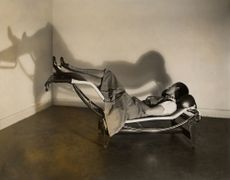 Charlotte Perriand’s life and work explored at London’s Design Museum
Charlotte Perriand’s life and work explored at London’s Design MuseumLondon’s Design Museum presents ‘Charlotte Perriand: The Modern Life’, an exhibition turned the spotlight on one of the most iconic creators of the 20th century
By Rosa Bertoli Last updated
-
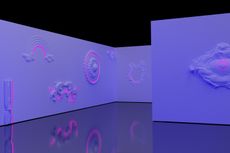 Dutch Design Week 2020: Ikea’s virtual greenhouse, networking fungi, and rethinking waste
Dutch Design Week 2020: Ikea’s virtual greenhouse, networking fungi, and rethinking wasteMoving its programme of talks and exhibition online (17 – 25 October), the Eindhoven-based design event virtually showcases future-oriented design thinking, material innovation and next generation talent
By Rosa Bertoli Last updated